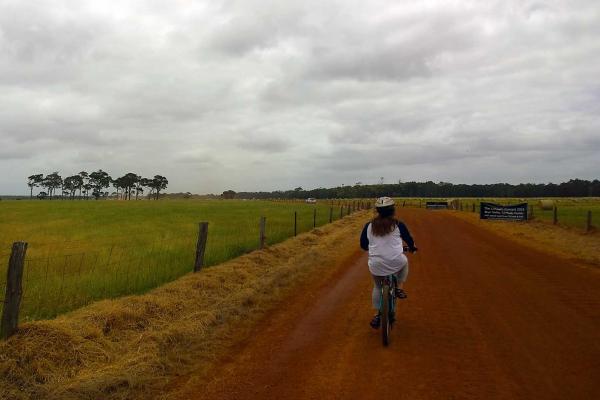When I lived in Prague, I taught several classes to young learners (ages six to 11), four times a week, with 15 students in the class. I fell in love with teaching then, and promised myself that I would somehow teach again, so on my second week in Saigon, I was offered a job to teach at a school in Q.9 (District 9).
I followed Anh in her bright green jacket (despite the 30 degree heat) on my motorbike out to Q.9, which was about a 20-minute drive. I had prepared a lesson for the class that she had told me about, which was a class of Vietnamese children of the age of nine with a beginner-level in English. Anh wrote to me in the email that they speak very little English, and very poorly.
The school I was working at on this day was a government school, which had a giant open courtyard in the middle. Each classroom had two entrances, one at the front and the back of it, and there were no doors, except on the offices of the teachers, which were all on the right side of the first floor.
We sat on the side of the courtyard of the school. Children would run up to us and wave with hands very close to my face saying, “Hello! Hello!” All of them were wearing the same uniform: a white button-up t-shirt and a red bandana around the neck. The boys were wearing navy coloured pants, and the girls had skirts that went to just below their knees.
From the back of the courtyard, there was a loud sound of a drum, which had the monotonous repetition that reminded me of the 1990s Disney film, Mulan. All of the students ran to stand into lines, and did morning exercises in time with the drum for about 10 minutes. The drum broke its monotony and banging very loudly 15 times, freeing the children from their exercises. They all proceeded to run into the various classrooms, pushing each other aside while staring at me with wide eyes.
In the two minutes that I had before the class began, I tried to rewrite my entire lesson plan.
Anh beckoned to me to follow her, so I followed her up onto the second floor of the right side of the courtyard, above where all the offices were. I entered a classroom that had a chalkboard, a small desk for the teacher, and a small ledge where the teacher was meant to stand in order to see the students in the classroom with ease.
I did a quick headcount of the students and was shocked to find out that there were at least 40 students in the classroom. The students were not nine years old, as Anh had told me, they were 11, and they were advanced speakers of English, not beginners.
In the two minutes that I had before the class began, I tried to rewrite my entire lesson plan. The lesson was 80 minutes long, and then five minutes after that class ended, I had another class that was the same age and same level as the first class I was teaching, according to Anh.
I was still scribbling in my notepad when the teacher’s assistant came to the front of the class and banged a ruler on the blackboard, causing me to jump in my chair.
“Được rồi, tất cả mọi người, đứng dậy và chào hỏi giáo viên mới của bạn!” she yelled, instructing the children to stand up. All 40 students stood and said in unison, “Hello, teacher.”
“Good morning class, how are you?” I said, while rising from my seat. The teacher’s assistant, Linh, already started walking to the back of the classroom, since her only duty was completed. She plopped into her seat at the back of the classroom, whipped out her phone and began texting at an insane speed.
“Fine, thank you and you?” they all said in unison.
“I’m fine, thank you,” I said, and turned to write my name on the board.
“Mọi người, ngồi xuống đi,” came Linh’s voice from the back of the classroom, and all of the students sat down in their chairs once again.
I began my lesson by telling the class my name and that I was from Canada. Once they heard that I was from a faraway land, they all went, “ooohhhh...” and began to whisper madly to one another. Linh banged her ruler on her desk and shouted sharply at the students once again, and the classroom fell silent.
I got through the lesson with a lot of difficulty. The children were well behaved, but restless and bored of my lesson, since they had already learned the vocabulary that Anh had told me was going to be “completely new” to them. So I started over and we played games to pass the hour instead, but even while we were playing games they had a short attention span. Needless to say, the first lesson was a disaster.
The second lesson went by about the same. In Canada, the teacher’s assistant is meant to help out the teacher and wander around the classroom to maintain order. In Vietnam, the teacher’s assistant sits at the back of the classroom on a stool, texting and playing games on their mobile phone.
I finished the second lesson by dismissing the children two minutes before the scheduled time, and Anh came up to me and asked if it was possible for me to teach at a different school the next day. I told her it wouldn’t be a problem at all, even though my heart was dead set against it.
I got back onto my motorbike, feeling completely drained, and tried to brainstorm ideas for anything else that I could do for work in Saigon, since teaching was out of the question.
Add this article to your reading list




